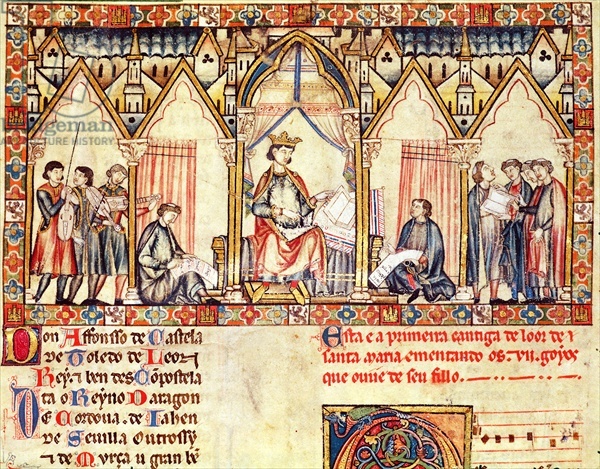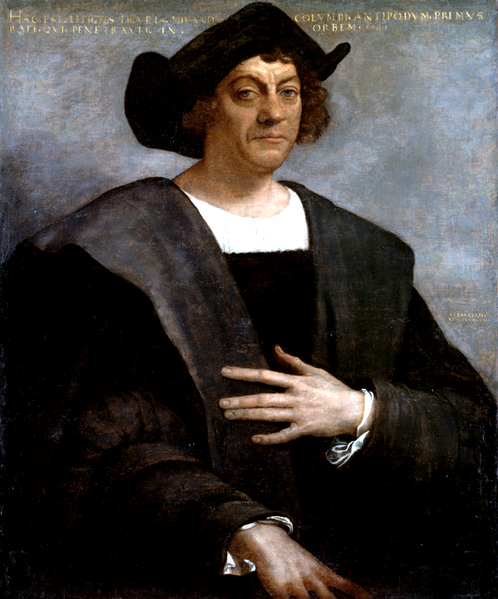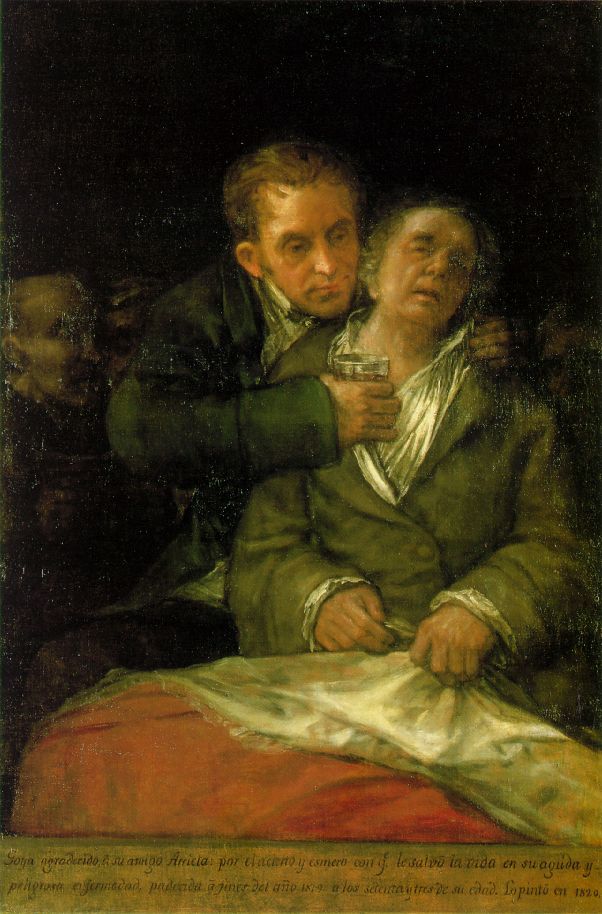Alfonso, the Learned of Castille as he was called. He was the Renaissance Man of the Middle Ages who marshalled the talents of Christians, Jews and Muslims in an incredible outpouring of scholarship and art…
If intellectual achievement counted in political life,Alfonso would have been the most successful of monarchs.In fact, he was nothing of the kind.His reign was marked by economic and political disasters. In the words of one later chronicler, “he studied the heavens and watched the stars, while losing the earth and his kingdom.”

—The court of Alfonso X (1221-84) ‘the Wise’, King of Castile and Leon, miniature from the ‘Cantigas de Santa Maria’ (vellum)
creator
Spanish School, (13th century)—click image for source…
Through his mother, Beatrice of Swabia, he had inherited a claim to represent the Hohenstaufen line, and in 1257 he was actually named emperor by four of the seven Electors of the Holy Roman Empire. The election was declared invalid, however, and Alfonso never managed to have his title recognized by the popes. The result was that he spent a great deal of Spanish money pursuing his European ambitions, was obliged to raise taxes and debase the coinage, lost the support of his nobles and the middle classes, and lived to see his own son take the field against him in a civil war.

—Posthumous portrait of Christopher Columbus by Sebastiano del Piombo, 1519. There are no known authentic portraits of Columbus.—WIKI
Of all his domains, only Seville remained loyal to him. Before his death at sixty-three, in 1284, he was reduced to trying to pawn his crown jewels in order to pay the army. It was as though he had fallen victim to that peculiar maldizer that Spanish destiny seems to reserve for intellectual excellence of any kind- the ironic and persistent twist of the Spanish tale that had Columbus imprisoned after discovering the new world, Cervantes living in dire poverty, Goya dying in exile, and Lorca shot in an olive grove.

—Throughout his life, even when in exile in Bordeaux, Goya was interested in new techniques and sought to extend his art. In his eighties, he drew himself, like an ancient Methuselah, with the title from a motto attributed to Michelangelo, “Still learning.” Goya died while in exile on April 16, 1828. Today many of Goya’s best paintings hang in Madrid’s Prado art museum. —
“Affliction has fallen on me,” Alfonso wrote to his cousin, Alonso Perez de Guzman, shortly before his death. “All men will know my misfortune and its sharpness, which I suffer unjustly from my son, my friends, and my prelates. Instead of making peace, they have done wrong- not in secret or disguise, but with bold openness. I find no protection within mine own land, neither defender nor champion. I have not deserved thus…”
So much for the ambition for his kingdom, that of a personal vision that tried to expand its intellectual resources, a Spain as Paradise, “foremost among nations in ingenuity, bold and powerful in war…and with a great love of learning.”





 COMMENTS
COMMENTS